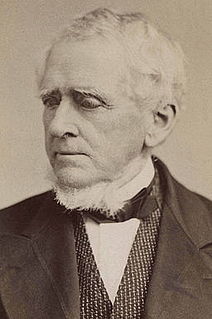| |||||||||||||||||||||||||
| |||||||||||||||||||||||||
17 of the 52 seats in the United States Senate (with special elections) 27 seats needed for a majority | |||||||||||||||||||||||||
|---|---|---|---|---|---|---|---|---|---|---|---|---|---|---|---|---|---|---|---|---|---|---|---|---|---|
| |||||||||||||||||||||||||
| |||||||||||||||||||||||||
The United States Senate elections of 1842 and 1843 were elections which had the Whigs lose seats but maintain control of the United States Senate. Although they lost three seats in the general elections, they gained two of them back by the start of the first session in special elections.

The Whig Party was a political party active in the middle of the 19th century in the United States. Four presidents belonged to the party while in office. It emerged in the 1830s as the leading opponent of Jacksonian democracy, pulling together former members of the National Republican and the Anti-Masonic Party. It had some links to the upscale traditions of the long-defunct Federalist Party. Along with the rival Democratic Party, it was central to the Second Party System from the early 1840s to the mid-1860s. It originally formed in opposition to the policies of President Andrew Jackson and his Democratic Party. It became a formal party within his second term, and slowly receded influence after 1854. In particular terms, the Whigs supported the supremacy of Congress over the presidency and favored a program of modernization, banking and economic protectionism to stimulate manufacturing. It appealed to entrepreneurs, planters, reformers and the emerging urban middle class, but had little appeal to farmers or unskilled workers. It included many active Protestants and voiced a moralistic opposition to the Jacksonian Indian removal. Party founders chose the "Whig" name to echo the American Whigs of the 18th century who fought for independence. The political philosophy of the American Whig Party was not related to the British Whig party. Historian Frank Towers has specified a deep ideological divide:

The United States Senate is the upper chamber of the United States Congress, which along with the United States House of Representatives—the lower chamber—comprises the legislature of the United States. The Senate chamber is located in the north wing of the Capitol, in Washington, D.C.
Contents
- Results summary
- Change in Senate composition
- Before the elections
- Result of the elections
- Beginning of the next Congress
- Beginning of the first session of the next Congress (December 4, 1843)
- Race summaries
- Special elections during the 27th Congress
- Races leading to the 28th Congress
- Elections during the 28th Congress
- Complete list of races
- New York
- Pennsylvania
- Tennessee
- See also
- References
As these elections were prior to ratification of the seventeenth amendment, Senators were chosen by State legislatures.

The Seventeenth Amendment to the United States Constitution established the popular election of United States Senators by the people of the states. The amendment supersedes Article I, §3, Clauses 1 and 2 of the Constitution, under which senators were elected by state legislatures. It also alters the procedure for filling vacancies in the Senate, allowing for state legislatures to permit their governors to make temporary appointments until a special election can be held.

A state legislature in the United States is the legislative body of any of the 50 U.S. states. The formal name varies from state to state. In 25 states, the legislature is simply called the Legislature, or the State Legislature, while in 19 states, the legislature is called the General Assembly. In Massachusetts and New Hampshire, the legislature is called the General Court, while North Dakota and Oregon designate the legislature the Legislative Assembly.










